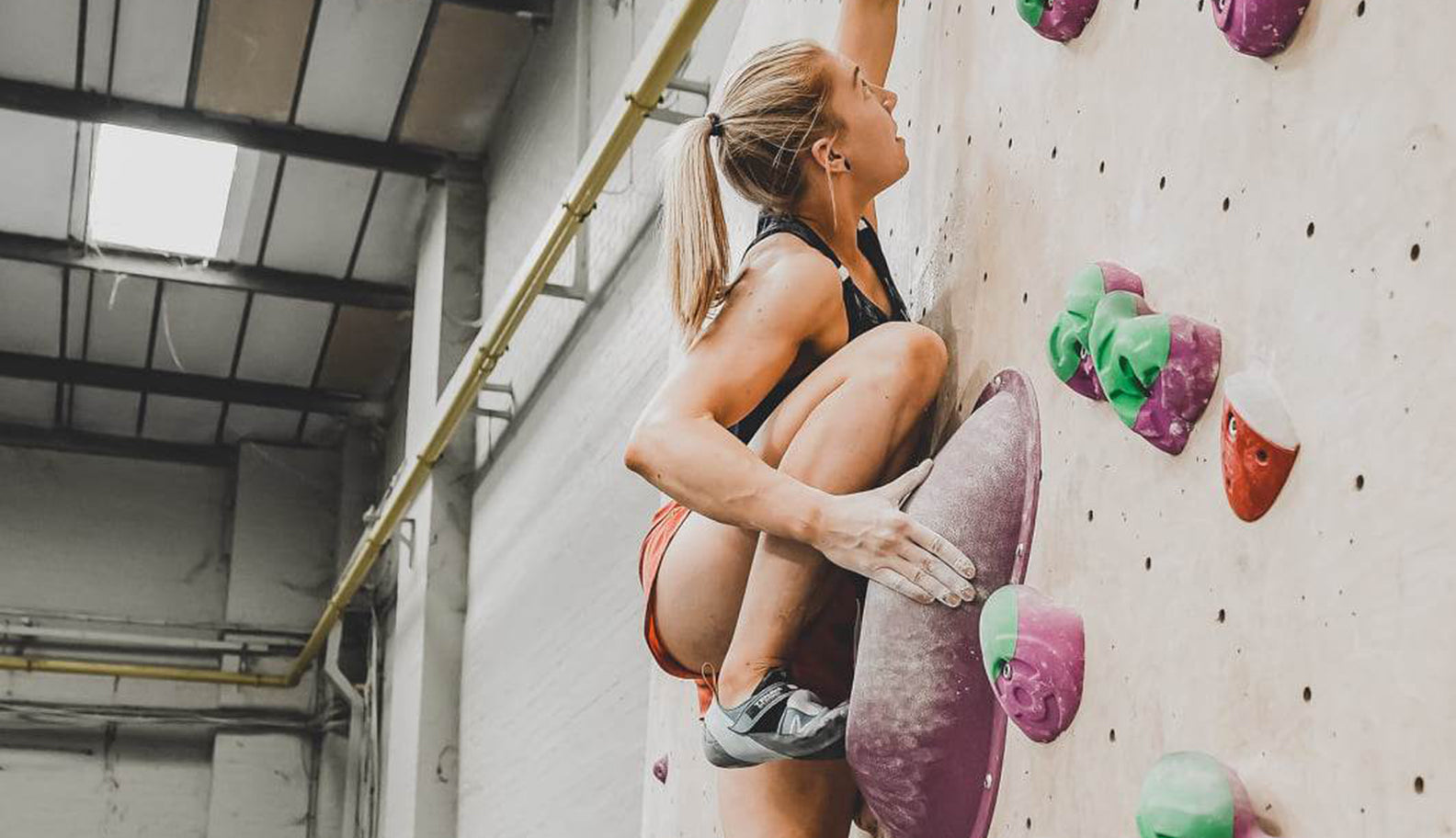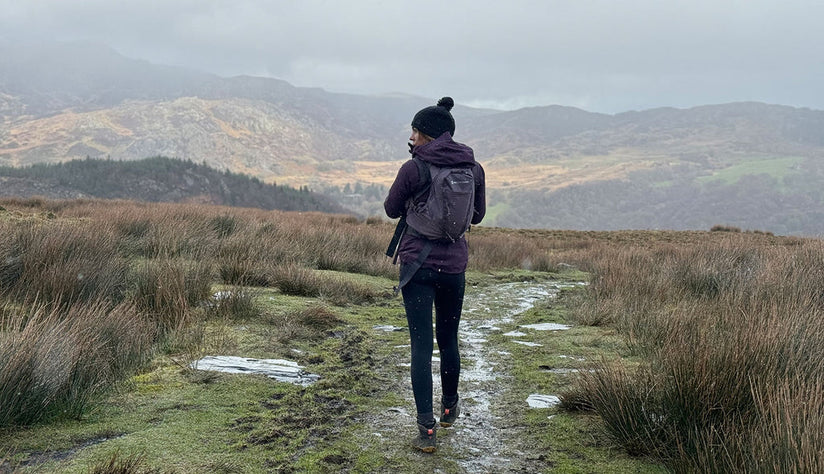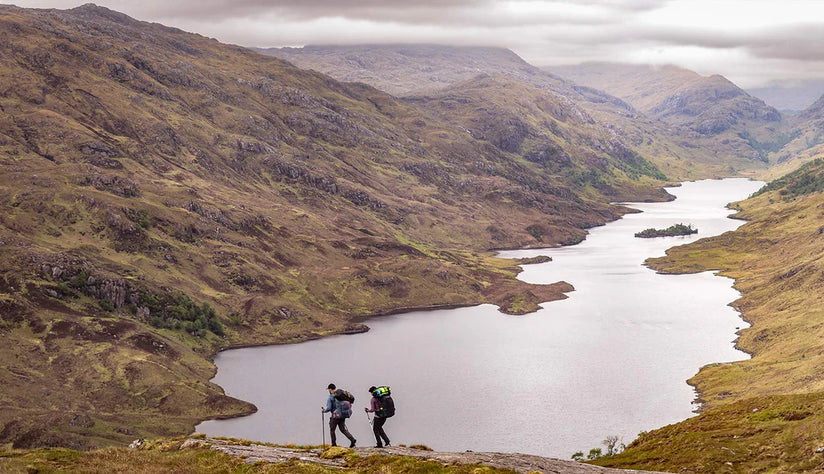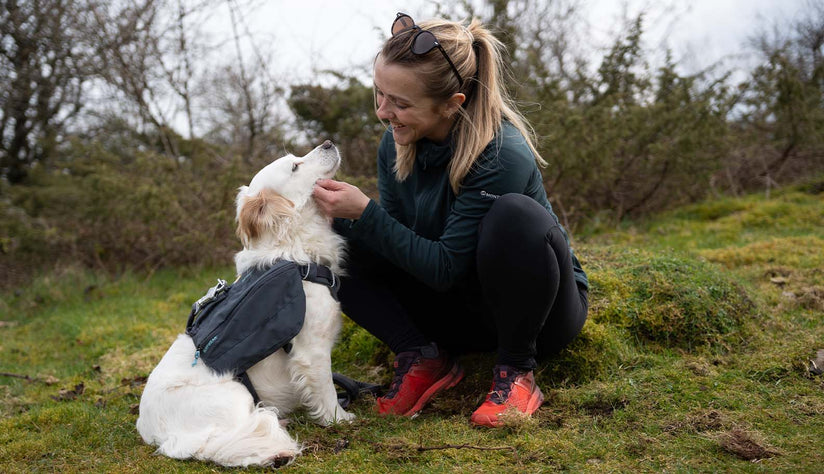In recent years, indoor climbing has experienced a huge surge in popularity. According to the Association of British Climbing Walls (ABC), around 1 million people in the UK currently climb indoors each year and the sport is growing by as much as 20% each year. Climbing's debut at the 2021 Olympic Games only seems to have solidified the idea that this sport has entered a new mainstream era - and climbing's popularity shows no sign of slowing down!
Eager to find out what all the fuss is about and to help even more of you reap the benefits of indoor climbing, we caught up with #TeamMontane climber and passionate boulderer Abbie Robinson. Keep reading to find out why she loves this sport so much and her essential advice for those just starting out…
Introducing Abbie
First, a little bit about me. I'm a competitive para climber from the North East and, although I compete on a rope, bouldering is really where my heart is! I started climbing at my local wall in Sunderland and, despite the impressive 23 metre roped walls, I was always drawn to the bouldering area (it's where all the cool people seemed to hang). These walls demanded power, explosiveness and the ability to throw some crazy shapes, which had me absolutely hooked.
From a practical point, it's also a lot easier for me to route, read (figure out the sequence) and climb with a feeling of total independence despite being partially blind, which is super important to me. Where I can only see holds about a metre away - and can't see any details unless they're right up close - bouldering suits me well as problems typically consist of around 6 moves with big holds. On boulders I can also climb up beside the problem and inspect the holds or use a brush stick to feel the shape and edges of each hold (pro tip!).

Why is bouldering so cool?
For me, bouldering gives me a sense of complete freedom and control. It’s just you and the wall battling it out together. Bouldering is becoming a really popular sport and there’s bouldering walls popping up all over the place. Unlike some types of climbing, bouldering is super accessible for newbies; you can turn up to a bouldering wall as a complete novice with no kit and gain a real sense of empowerment by just getting to the top of the wall for the first time.
There’s also a huge social aspect to it; there’s nothing quite like pulling off some wild moves on the wall with a group of mates on the mats behind you cheering you on! It’s also easy to climb with people of different abilities as boulders are all mixed up on the wall. So, you could be sitting with someone at a completely different level to you, climbing completely different things, but still get the opportunity to spark up a conversation and learn from them.
So, what is indoor climbing?
Indoor climbing can be with or without a rope and involves getting as far up a set route of climbing holds as possible. These holds can come in all different shapes and sizes and are sort of like one huge puzzle on the wall. You need to focus on planning how you're going to ascend the route and then use a balance of strength, technique and mental skills to fight your way up it!
There are three main disciplines in competitive indoor climbing; boulder, lead (sport) and speed. Speed climbing focuses on getting to the top of an internationally standardised route as quickly as possible. Lead climbing involves climbing a wall (usually around 15 metres) and clipping a rope in as you ascend (sidenote: as a beginner, you might try ‘top roping’ in which the rope is already secured at the top of the wall).
And finally, bouldering involves pulling off around 6 moves on a 4 metre wall with a crash mat underneath. Bouldering requires your absolute max effort. It's a fine balance of strength, power, problem-solving, technique, coordination and A LOT of out-of-the-box thinking. Are you hooked yet?

How to get started
Getting started is always the hardest part and, although the climbing community is super welcoming and lovely, it’s still terrifying to walk into a gym for the first time. So, first let’s build your confidence on the wall. Most climbing gyms will generally run a taster session or beginners' course that runs through the basics, teaches you some technique and allows you to build confidence on the wall with the support of an experienced instructor/coach. If you don’t want to take part in a course, that’s okay! You can usually turn up to a bouldering wall and give it a go with no prior experience.
Now, let’s find some people to climb with!
It’s worth looking on social media or asking the staff if they run any coaching workshops or social sessions. Lots of walls run weekly social sessions, including some specifically for women, LGBTQ+, BAME and differently abled individuals. These are great places to meet like-minded people and some of my closest friends are those I met at various paraclimbing events and ladies nights over the years!

Essential equipment
Now you have the skills and you have some mates to climb with, it’s time to look the part! Bouldering requires very little to start with. Make sure you’re wearing something comfortable, and if you really want to look the part, a jazzy fleece and a down jacket will really give off climber vibes.
Shoes: You can hire climbing shoes, which will fold your feet in ways you didn’t know possible! But, while you’re just starting out, go up a few sizes so you can get used to the fit. When fitting climbing shoes for your first few sessions, you want your toes to be right at the end (so you can step on tiny footholds) and for the shoes to be snug everywhere, but not so tight it’s painful!
Chalk: Some walls also allow you to hire chalk, which will come in useful as you venture onto smaller and slipperier holds as it will help increase friction. A small chalk bag or ‘boulder bucket’ with a chalk ball or loose chalk in is ideal (I prefer a mix!).
Extras: As you slowly become obsessed with climbing and buy all the gear possible, you can also grab yourself a brush (to brush excess chalk and dirt off holds) and some tape (for wrapping up cuts and blisters on your hands, glamorous right?).

Bouldering Technique & Advice
Now you have all the gear and no idea, let’s run through some basic techniques to get you started.
Keep your arms straight: T-Rex's aren’t known for their climbing skills for a reason. The common misconception is that climbing is all in your arms – it's not! If you pull into the wall and climb with fully bent arms, they will tire VERY quickly. So, try to keep straight arms, relax your grip as and allow your legs to drive you up the wall.
Climb in balance: Climbing in balance will save you a lot of energy. As a rule of thumb, every time you reach for a hold with your right hand, you should be pushing with your right foot (and vice versa).
Focus on your feet: If your footwork isn’t precise, you won’t trust your feet. And not trusting your feet can lead to foot slips or over gripping and pulling with your arms to compensate. Focus on using the very tips of your toes on each hold rather than the sides or arches of your feet as this gives you more height and freedom to pivot. Secondly, make sure you watch your foot as you place it on each hold. This way, you can be sure the placement was precise and be confident driving all of your weight through the foothold, no matter how small!
It’s all in the hips: Your hips are where your centre of gravity is, so use them wisely. Every time you make a move on the wall, start by placing your foot on the next foothold, then shift your hips so they’re directly above the foot and, finally, move your hand to the next handhold. Always think “feet, hips, hands” as you move up the wall.
Sidenote: Start easy! This is a lot to think about and virtually impossible when you’re tired. So, start on something you find easy and focus on each of these techniques one by one. Soon, they’ll feel totally natural.

Safety
It’s important to be mindful that bouldering can be dangerous. There are no ropes here and, unfortunately, gravity still exists in climbing gyms. So, if you fall off, you’ll land on a large crash mat that will help reduce the risk of serious injury.
Each centre will generally run through the safety rules with you when you join, so make sure you listen up and follow them to reduce the risk of anybody getting hurt. These are the general safety rules to be mindful of:
Don’t walk, run, sit or climb under anybody else who is on the wall (be mindful when walking around corners or through caves!).
Don’t climb over/above another climber. Be mindful of the route you are getting on and whether it crosses over someone else’s.
Avoid jumping from the top of the wall where possible. Climb down to around head height and jump off in control.
Don’t leave any belongings e.g., water bottles on the mats where they may be landed on.
Quick tips
To finish off, here are some quick tips for getting started at bouldering:
Find a local social club: Climbing is all about community and you can learn a lot from watching others.
Take it at your own pace: Build confidence on the wall by starting out easy and low down. It’s natural to be nervous about trusting your feet and pulling in with your arms. However, this can be very tiring and it’s difficult to stay calm when you’re getting tired. So, take things slow, focus on your feet, relax your arms and find your flow on the wall.
Have fun! It’s not all about getting to the top or chasing the next grade. Climbing is a free and fun sport that’s about problem-solving, pushing your mental and physical limits and getting psyched with cool people. If you don’t get to the top, that just means you’re being challenged!















